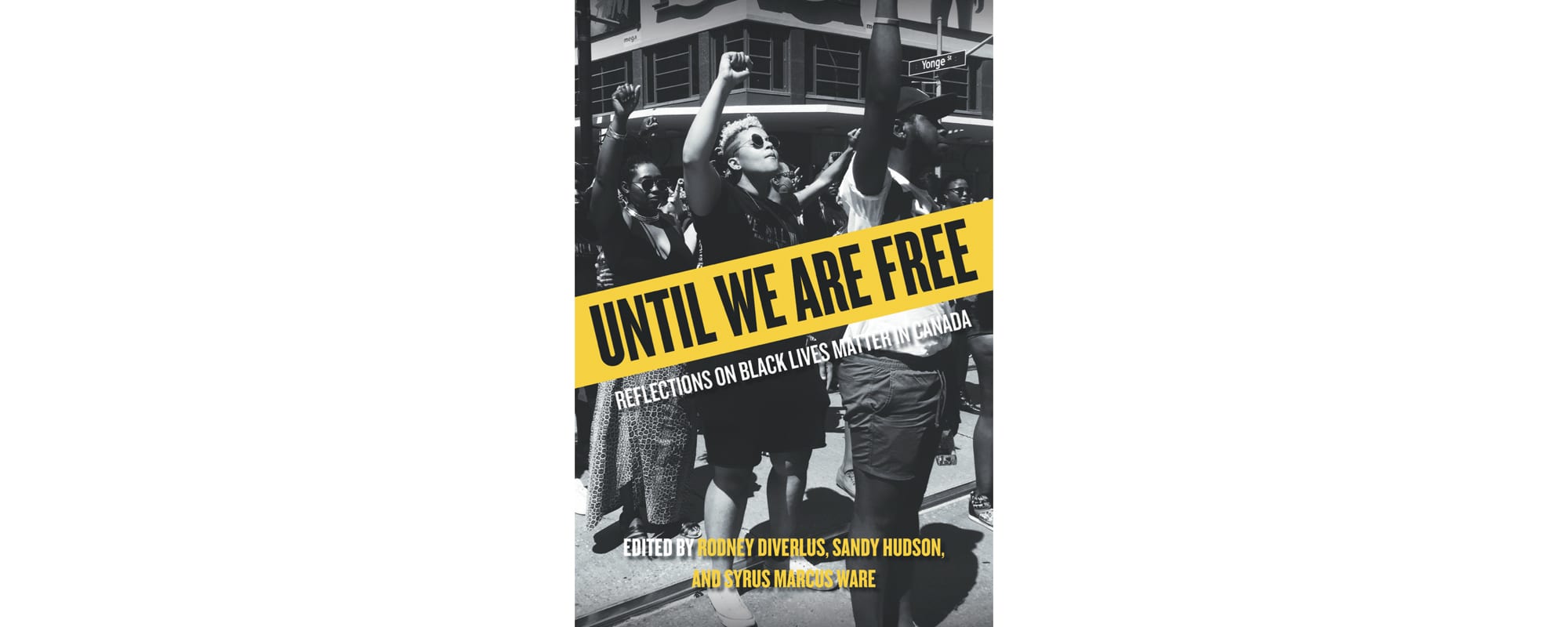
The anthology Until We Are Free: Reflections on Black Lives Matter in Canada is a comprehensive compendium focusing on the most urgent issues facing Canada’s Black community today. Edited by core and founding members of Black Lives Matter Toronto, this book contains essays by and conversations with artists, educators, scholars, activists, and community leaders about Black resistance and liberation, describing the latest developments in Canadian Black activism and organizing efforts.
The Black Lives Matter (BLM) movement was born following the acquittal of George Zimmerman, who shot and killed unarmed Florida teenager Trayvon Martin in 2012. Black Lives Matter grew from a hashtag – started by Alicia Garza and Patrisse Khan-Cullors – to an online platform to a global movement. In 2014, Sandy Hudson, having witnessed the rapid uptake of the movement south of the border, reached out to her fellow organizers in the city of Toronto to brainstorm options for spaces that centred the experiences of Black people. A planned vigil in Toronto following the killing of Michael Brown far exceeded attendance expectations and resulted in the formation of the Toronto chapter of Black Lives Matter.
From its outset, Black Lives Matter Toronto emphasized the range of differing experiences within Blackness. Accessibility was important, such as providing ASL interpretation and access vehicles as well as childminding at events and meetings. Many of the core organizers were queer or trans; many were first-generation immigrants of various backgrounds. Until We Are Free explores Blackness as it relates to intersectional identities, experiences, and goals.
Sarah Jama writes that being a Black disabled woman resulted in isolation within multiple communities, including discrimination from activist and organizing groups. Jama argues that activist circles amplify some voices but disregard other experiences, especially related to people with disabilities. Jama goes on to write that liberation from oppressive systems won’t occur unless the focus of activism shifts to include the protection and liberation of disabled people.
In a similar vein, Syrus Marcus Ware focuses on the ways Blackness and Black LGBTQ2S+ activism in Toronto have been erased from broader white queer and trans history. Ware examines interventions by Black queer and trans critics and activists who have attempted to re-inscribe Blackness into this narrative. In particular, he posits that centring QTBIPOC (queer and trans Black and Indigenous people of colour) provides a different entry point into queer and trans experiences and disrupts the whitewashing of history that results from omitting those perspectives.
Until We Are Free also illustrates how Black liberation and resistance can and does work in tandem with Indigenous movements. Robyn Maynard and Leanne Betasamosake Simpson discuss ways they are deeply engaged with each other’s work and practice, how conceiving of the issues that affect one group also affects the other. They talk about the “overlapping logics and outcomes” of settler-colonialism and anti-Black racism; state violence and criminalization of Black and Indigenous bodies; and interconnectedness between the body and the land from both Black and Indigenous perspectives.
Running through the anthology are conversations between activists, educators, and leaders. In one chapter, Ware and Giselle Dias (Niigaanii Zhaawshko Giizhigokwe) discuss the way Black and Indigenous solidarity might be harnessed in the dismantling of the prison industrial complex, exploring what abolition means to them, how the idea influences the way they organize and protest. Rodney Diverlus, Patrisse Khan-Cullors, and Janaya Khan discuss the origins and legacy of Black Lives Matter – in Toronto and worldwide – and what it means for BLM to be a global movement. They also speak about how being Black is perceived in Canada, the erasure of Black Canadian histories, how the BLM movement and Black resistance and liberation in Canada compare to that of the U.S.
Among the unique aspects of Until We Are Free are the first and final sections, in which the editors ask readers to consider an imagined future. These two bookend pieces unfold as any fictional narrative would, providing readers with characters, a setting, a history, and something to care about. In the introduction, set in the year 2055, water and trees are scarce, the Earth’s population has severely declined, and heat quickly harms the body. In the postscript, set in the year 2092, humans have returned to live above ground and new ways of tackling climate change develop. Despite their futuristic settings, the imagined worlds illustrate a trajectory of hope. The editors address the intention of their anthology in these sections, both of which feature characters making use of Until We Are Free as a source of inspiration and guidance and a resource for social-justice frameworks and rebuilding communities.
Whether in an imagined future or today’s stark reality, Until We Are Free stands as a necessary work that is bound to become central to dialogues in the areas of social justice and global liberation.
 Contact us via email
Contact us via email

